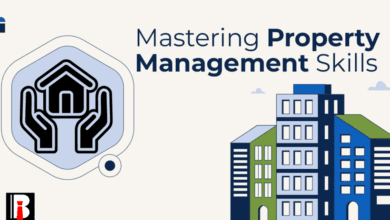8 Biggest Challenges and Solutions in Business Accounting Systems
Businesses rely on accounting systems to accurately record, analyze, and interpret financial data. Maintaining financial stability through effective business accounting is vital, yet it poses significant challenges. These obstacles range from securing data and integrating systems smoothly to adhering to regulations and efficiently managing cash flow. This article delves into the eight primary challenges accounting systems face and presents practical solutions to conquer them.
Quick Shortcut Headlines
Challenges and Solutions for Business Accounting Systems:
Below are eight of the most significant challenges, along with their respective solutions:
Data Security and Privacy
Data security and privacy are top business concerns in today’s digital world. Businesses must implement robust data security measures. Vital components include encryption, strong password protocols, multi-factor authentication, and regular data backups. Equally important is educating employees on best security practices to instill a vigilant culture. Moreover, employing access controls, role-based permissions, and monitoring systems ensures that only authorized personnel can access sensitive data.
Regular security audits and vulnerability assessments help identify and address potential weaknesses in the system. Businesses can build trust with stakeholders, protect their valuable assets, and confidently navigate the digital landscape by giving due attention to data security and privacy.
Integrating Different Systems
Integrating different systems is a common challenge for businesses seeking efficient, streamlined operations. As companies adopt various software applications to manage different aspects of their operations, data silos and communication gaps can arise. It leads to fragmented information, redundancies, and reduced productivity.
Businesses must invest in a comprehensive integration strategy. Modern cloud-based solutions can facilitate seamless data flow between different systems, promoting real-time updates and data synchronization. Application programming interfaces (APIs) connect disparate systems and enable smooth data exchange. Moreover, businesses should prioritize selecting software and tools that offer easy integration capabilities and support industry-standard data formats.
Manual Data Entry and Human Errors
Manual data entry and human errors pose significant challenges for business accounting systems. Relying on manual input increases the risk of inaccuracies, typos, and data entry mistakes, leading to erroneous financial records and compromised decision-making. These errors can have far-reaching consequences, from misreporting financial results to inaccurately calculating taxes and compliance issues.
Businesses should invest in automation solutions. Adopting accounting software with data import functionalities and optical character recognition (OCR), technology can streamline data entry processes and reduce human errors. Implementing data validation checks and reconciliation procedures can help detect and correct errors promptly. Furthermore, providing regular training and enforcing data entry protocols can improve employee accuracy and attentiveness.
Talent and expertise
Talent and expertise are paramount assets for any organization’s success. They refer to the skills, knowledge, and capabilities possessed by its workforce. Acquiring and retaining talented individuals with specialized expertise is essential in achieving business objectives, innovation, and maintaining a competitive edge.
Businesses can enhance productivity, problem-solving, and efficiency by hiring skilled professionals. Offering continuous learning opportunities and professional development programs helps nurture employee growth and loyalty. Moreover, fostering a supportive and inclusive work environment can attract diverse talent, enriching the organization with various perspectives.
Scalability and Flexibility
Scalability and flexibility are crucial in any system or organization, enabling efficient adaptation and growth. It handles increasing demands and workload without compromising performance or functionality. It ensures seamless expansion and accommodates higher user numbers or data volumes. Flexibility, on the other hand, allows the system to adapt to changing requirements and environments easily.
A flexible system can be modified or extended without major disruptions, making it agile and future-proof. Together, scalability and flexibility empower businesses and technologies to stay competitive, responsive to user needs, and capable of handling unpredictable challenges and opportunities.
Inefficient Workflow and Processes
More efficient workflow and processes are needed to improve organizational productivity and effectiveness. They often involve redundant or unnecessary steps, lack of automation, unclear responsibilities, and communication gaps, leading to delays and errors. Inefficiencies can arise from outdated technologies, inadequate training, or resistance to change.
These issues result in increased operational costs, missed deadlines, dissatisfied customers, and reduced employee morale. Identifying and rectifying inefficient workflows and processes is crucial for streamlining operations, optimizing resource utilization, and enhancing overall performance. Organizations can achieve higher efficiency, better collaboration, and a competitive edge in their industry by implementing improvements such as process automation, employee training, and continuous evaluation.
Cash Flow Management

Cash flow management is vital to overseeing and enhancing cash movement in and out of business. It includes monitoring the timing and amount of cash inflows from sales, investments, and loans, as well as outflows for expenses, debt payments, and investments. Efficient cash flow management ensures the company can meet its financial obligations promptly.
Businesses can proactively address potential shortfalls by maintaining adequate reserves or arranging additional financing by forecasting cash flow. Moreover, optimizing cash flow enables companies to seize growth opportunities, repay debts, and navigate economic downturns, fostering long-term financial stability and success.
Dealing with Taxation
Dealing with taxation involves navigating complex tax laws, reporting requirements, and compliance obligations. Businesses should stay updated on tax regulations and seek professional assistance from qualified tax experts or advisors. Utilizing tax software can facilitate accurate tax calculations, filing, and reporting.
Proper record-keeping and documentation are crucial to substantiate deductions and credits. Maintaining transparent financial records and timely payment of taxes helps prevent penalties and audits. Emphasizing tax planning and optimization strategies can minimize tax liabilities while maximizing allowable benefits. Overall, a proactive and organized approach to taxation is essential for businesses to stay compliant and financially efficient.
Conclusion
Accounting systems are crucial for financial stability in business but also have challenges. From securing data and integrating different tools to following regulations and managing cash flow, businesses face various hurdles to ensure accurate financial operations. This article examines the eight major challenges accounting systems encounter and offers practical solutions to conquer them. Businesses can streamline their accounting processes, make well-informed decisions, and succeed in today’s competitive market by addressing these issues proactively.






